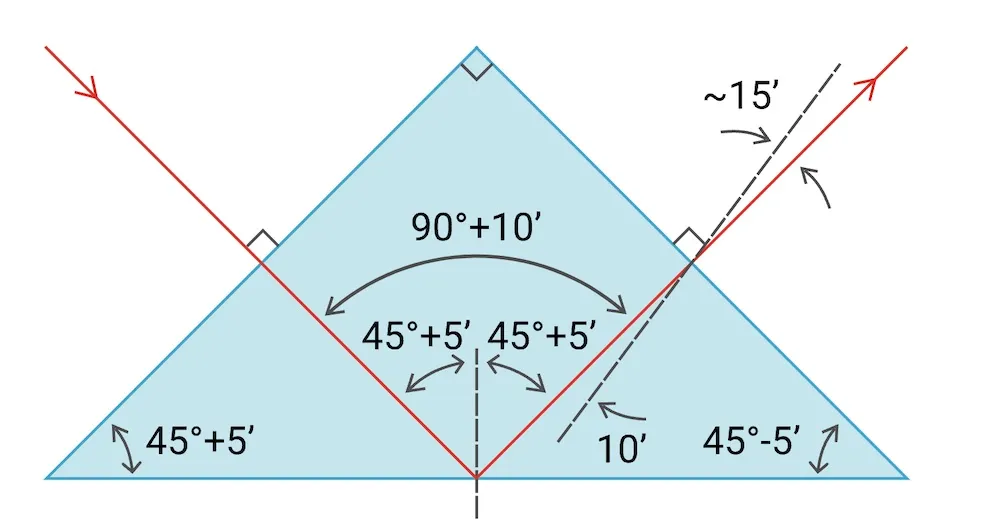Introduction: The Importance of Angle Tolerance
Angle tolerance holds a pivotal role in the realm of optical component specification, particularly relevant for items like prisms, beamsplitters, and various components featuring angled surfaces. This guide distills the essence of angle tolerance into ten fundamental aspects, ensuring the precision alignment and functionality of optical systems.

Defining Angle Tolerance
Angle tolerance is delineated as the permissible range of deviation from a pre-defined angle between surfaces or specific features of an optical component. This specification ensures the precision alignment and functionality of optical systems.
Applicable Components
Commonly, angle tolerance is a critical specification for components such as prisms, beamsplitters, and windows, especially those designed with intentionally non-parallel surfaces aiming to manipulate light paths.
Measurement Techniques
The determination of angle tolerance is typically conducted through an autocollimator setup. This method employs collimated light, facilitating the precise measurement of angles between optical surfaces to ensure adherence to specified tolerances.
Units of Measurement
Specified in angular units, angle tolerance is predominantly expressed in arcminutes (‘) or arcseconds (“‘), providing a standardized scale for assessing the precision of angled components.
Typical Values
- Base/Low precision: 5-6 arcminutes, suitable for general applications.
- Precision: Approximately 1 arcminute, for applications requiring greater accuracy.
- High precision: Ranging between 15-30 arcseconds, demanded in highly precise optical systems.
Performance Implications
The angle between surfaces significantly influences the optical path or beam direction. Thus, deviations from specified angle tolerances can result in misalignments or performance degradation within optical systems.
Cost Considerations
Tighter angle tolerances necessitate advanced manufacturing processes, potentially elevating production costs. Components requiring high precision tolerances may incur significantly higher costs due to the need for specialized equipment or expertise.
Manufacturing Challenges
Attaining stringent angle tolerances presents a notable challenge in optical manufacturing, demanding meticulous fabrication and measurement methodologies to ensure component precision.
Specification Recommendations
When establishing angle tolerances, it’s essential to judiciously balance the system’s functional requirements with manufacturing capabilities and cost considerations, ensuring optimal performance without unnecessary expense.
Interrelation with Other Tolerances
Angle tolerance is intrinsically linked with a comprehensive suite of optical tolerances, including dimensions, surface quality, and flatness. Collectively, these tolerances define the overall precision and functionality of the optical component.
Conclusion: Balancing Parameters for Optimal Performance
In the pursuit of designing or specifying optical components, the meticulous consideration of angle tolerance, alongside other pertinent tolerances, is crucial. Engaging with optical manufacturers to ascertain achievable tolerances tailored to your application can foster the development of optimal optical systems.
FAQs:
What is angle tolerance in optical components?
Angle tolerance is the allowable deviation from a specified angle between surfaces or features of an optical component, ensuring precision alignment and functionality.
Why is angle tolerance important for optical performance?
Angle tolerance affects the optical path and beam direction, where deviations can lead to misalignments or degraded performance in optical systems.
How are angle tolerances measured?
Angle tolerances are typically measured using an autocollimator setup, which employs collimated light to precisely measure angles between optical surfaces.

